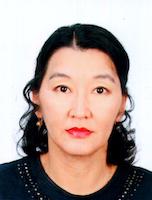Managing the documents in Old Mongol writing at the National Archives of the Republic of Tuva: history and issues of improvement
DOI:
https://doi.org/10.25178/nit.2020.2.9Keywords:
Tuva; archive; State Archives of the Republic if Tuva; National Archives of the Republic of Tuva; Old Mongolian writing; Mongolian language; archival document; digitizationAbstract
The article traces the history of managing the massive of documents in Old Mongolian writing preserved at the National Archives (prior to 07.04.2020 known as the State Archives) of the Republic of Tuva. We focus on Mongol fond No. 115, since all other fonds which contain Mongolian documents later split away from this collection. The fond covers documents created over a large span of time: the Qing period (early 18th century to 1912), the short period of the Russian protectorate (1914-1921) and the first decade of the Tuvan People’s Republic (1921-1933). All of the documents are in Old Mongolian language.
The history of the fond is part and parcel of the history of the archive itself. Originally, the documents were grouped together by their chronological, thematic and subject matter features. Traditional chronological record keeping was accompanied by having some of the documents translated into Tuvan. In the Soviet years, archival work followed the common USSR guidelines. While the amount of archival material grew, there was an obvious lack of well-trained specialists who both knew Tuvan history and could read Old Mongolian writing. Documents have been moved between fonds. A significant contribution to studying the Mongolian fond was made by Buryat scholar P.B. Baldanzhapov (born 1957).
Materials preserved in the fond were actively studied and used in 2011-2014 when the Archives did a joint project with Tuvan Institute for the Humanities and Applied Socioeconomic Studies. 4 volumes of “A collection of archival documents on the history of Tuva” were published between 2011 and 2014.
At the moment, Fond 115 is still being improved, with an electronic catalogue to be set up. Other plans include digitizing and restoring the documents.
References
Baiyr-ool, M. (2009) Politicheskii portret M. Buian-Badyrgy [Political portrait of M. Buyan-Badyrgy]. In: Mongush Buian-Badyrgy — osnovatel' tuvinskoi gosudarstvennosti [Mongush Buyan-Badyrgy as the founder of Tuva statehood]. Materials of the Republican scientific and practical conference dedicated to the 115th anniversary of the birth of Mongush Buyan-Badyrgy / ed. and comp. by U. P. Bicheldei. Kyzyl, Tyvapoligraf. 194 p. Pp. 88–141. (In Russ.).
Vasilenko, V. A. (2012) Neopublikovannaia rukopis' Purbo Baldanzhapova «Tuva pod gnetom man'chzhurskikh zakhvatchikov» [Purbo Baldanzhapov’s unpublished manuscript “Tuva under the yoke of the manchu invaders”]. The New Research of Tuva, no. 2 [online] Available at: https://nit.tuva.asia/nit/article/view/335 (access date: 01.02.2020).
Samdan, A. A. (2016) Tuvinskie mongoloiazychnye letopisi [Tuva Mongol-language Chronicles]. Abakan, Zhurnalist. 185 p. (In Russ.).
Tuvgiin tuukhend kholbogdokh arkhivyn barimdyn emkhetgel. Bot' I (1738–1911) = Sobranie arkhivnykh dokumentov po istorii Tuvy. Tom I (1738–1911) = Tyvanyn tooguzunge khamaarzhyr shygzhamyrlar bizhimelderinin chyyndyzy. 1-gi tom (1738–1911) [A collection of archival documents on the history of Tuva. Vol. 1. (1738–1911)] (2011a) / ed. by S. Chuluun and A. K. Bicheldei. Ulanbaatar; Kyzyl, s. n. 498 p. (In Mong., Russ. and Tuv.).
Tuvgiin tuukhend kholbogdokh arkhivyn barimdyn emkhetgel. Bot' II (1911–1921) = Sobranie arkhivnykh dokumentov po istorii Tuvy. Tom II (1911–1921) = Tyvanyn tooguzunge khamaarzhyr shygzhamyrlar bizhimelderinin chyyndyzy. 2-gi tom (1911–1921) [A collection of archival documents on the history of Tuva. Vol. 2 (1911–1921]. (2011b) / ed. by S. Chuluun and K. A. Bicheldei. Ulanbaatar; Kyzyl, s. n. 469 p. (In Mong., Russ. and Tuv.).
Tuvgiin tuukhend kholbogdokh arkhivyn barimdyn emkhetgel. Bot' III (1921–1944) = Sobranie arkhivnykh dokumentov po istorii Tuvy. Tom III (1921–1944) = Tyvanyn tooguzunge khamaarzhyr shygzhamyrlar bizhimelderinin chyyndyzy. Tom III (1921–1944) [A collection of archival documents on the history of Tuva. Vol. 3 (1921–1944] (2014a) / ed. by S. Chuluun and K. A. Bicheldei. Ulanbaatar; Kyzyl, s. n. 418 p. (In Mong., Russ. and Tuv.).
Tuvgiin tuukhend kholbogdokh arkhivyn barimdyn emkhetgel. Bot' IV. Sobranie arkhivnykh dokumentov po istorii Tuvy. Tom IV (1944–1991). Tyvanyn tooguzunge khamaarzhyr shygzhamyrlar bizhimelderinin chyyndyzy. Tom IV (1944–1991) [A collection of archival documents on the history of Tuva. Vol. 2 (1944–1991] (2014b) / ed. by S. Chuluun and K. A. Bicheldei. Ulanbaatar; Kyzyl, s. n. 166 p. (In Mong., Russ. and Tuv.).
Tatarincev, B. I. (1976) Mongol'skoe yazykovoe vliyanie na tuvinskuyu leksiku [Mongolian language influence on the Tuva lexicon]. Kyzyl, Tuvinskii nauchno-issledovatel'skii institut yazyka, literatury i istorii. 129 p. (In Russ.).
Published
How to Cite
Samdan A. A. Managing the documents in Old Mongol writing at the National Archives of the Republic of Tuva: history and issues of improvement. The New Research of Tuva, 2020; 2: 137-144. DOI: https://www.doi.org/10.25178/nit.2020.2.9
Issue
Section

Author(s) license holder(s) grant rights for their work to the journal (grantee of a license) under the simple non-exclusive open license in accordance with Art. 1286.1 «Open license for a research work, work of literature or fine arts», Civil Code of the Russian Federation.
New Research of Tuva publishes articles under the Creative Commons Attribution-NonCommercial license (CC BY-NC).
Since it is an open license, author(s) reserve the right to upload the article to their institutional repository, submit it to another journal (if it allows republications), or republish it on their own website (in full, or in part).
However, several conditions apply here:
a) The republished version must always contain the name(s) and affiliation(s) of the author(s), the original title and the hyperlink to the original version on the New Research of Tuva website;
b) It must be in open access, free of charge, and no category of readers must be in any way whatsoever advantaged over general readership.
c) should the contribution be submitted elsewhere by its author(s) without substantial modification (30% or more of original text unchanged), the body of the article should contain a disclaimer that the original version was published in New Research of Tuva (with a link to the respective page)
The CC-BY-NC is a non-revocable license which applies worldwide and lasts for the duration of the work’s copyright.









